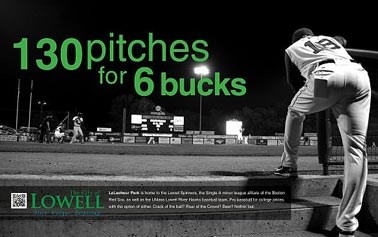Creative Economy Research Adds to Public Good

06/19/2013
By Sandra Seitz
UMass Lowell recently convened the first conference of Creative Economy grant recipients from all UMass campuses.
The Creative Economy Initiatives fund was established in 2007 by the UMass President’s Office to complement the Science and Technology fund, established the year before. Now in its sixth year, the Creative Economy fund has provided 54 awards totaling more than $1.5 million.
Marcellette G. Williams, UMass senior vice president for Academic Affairs, Student Affairs & International Relations, opened the conference.
“As a land-grant institution, the University of Massachusetts is charged not only with providing accessible, high-quality education but also with conducting programs of research and public service to advance knowledge and improve people’s lives,” she said.
“Sciences and humanities are often considered separate cultures but, as humans, we have a range of elements, although we are not very good at connecting and synthesizing all aspects of the self,” said Williams. “The grants help to improve understanding of our own humanity, regardless of the academic discipline.”
Return on Investment
Edmund Beard, senior adviser for Academic Affairs in the President’s Office, chairs the advisory board that oversees the grants.
“Our goal is to build, strengthen and improve the cultural and creative resources of the commonwealth, thereby giving a boost to the creative industry and improving the quality of life,” he said. “This makes Massachusetts a more attractive place to live and work, and brings in the scientific and innovative companies that have a high return on investment.
“Creative Economy grants support initiatives by the faculty in the arts, humanities and social sciences and encourage innovative collaboration,” said Beard. “The grants are popular with the public, as many of the projects build enduring community-university partnerships.”
Faculty Difference Makers
Political Science Prof. John Wooding planned and moderated the conference. The invited grant recipients clearly relished the opportunity to exchange information and ideas about their work, with panel presentations grouped into three areas: 1) cultural enrichment and the quality of life; 2) economic benefits and contributions to sustainability; and 3) can the university make a difference?
As examples, two UMass Lowell initiatives made tangible contributions to cities in the region; together, they reflect the diversity of work presented at the conference.
Art Assoc. Prof. Karen Roehr used the Creative Economy grant for a project in her Advertising Design class, in which four teams competed to create campaigns for the city of Lowell advertising account. The winning campaign — Lowell by the Numbers — used dramatic black and white photos to showcase Lowell’s recreational, cultural and entertainment offerings.
The successful campaign ads, displayed across metro Boston, can be seen in magazines, on posters and as bus wraps in several cities; the grant helped fund professional production of the ad materials.
History Prof. Robert Forrant used Creative Economy grant funding to work on the Centennial of the great Bread and Roses strike of 1912, a pivotal event in the American labor movement.
“This was one of my most rewarding experiences as a professor,” Forrant said. He briefly listed project outcomes.
“The Massachusetts Humanities Council matched our grant and we created a permanent historical exhibit, the first about the strike, that had 15,000 visitors last year,” he said. “Through this, the Lawrence History Center significantly increased its donor base, while many residents learned about their city and their own families’ experiences with the strike.”
Forrant spoke to more than 4,000 students and gave interviews to the New York Times, the Boston Globe and National Public Radio.
“Student learning in all my classes was enriched and the curriculum was used in freshman honors classes and the interdisciplinary Work, Labor and Society program,” Forrant said. “That culminated in a (http://www.uml.edu/News/stories/2011-12/BreadRosesEvent.aspx) campus event involving hundreds of students, faculty and staff,” Forrant said. “Also, the scholarly history that will be published includes two chapters written by students.”
